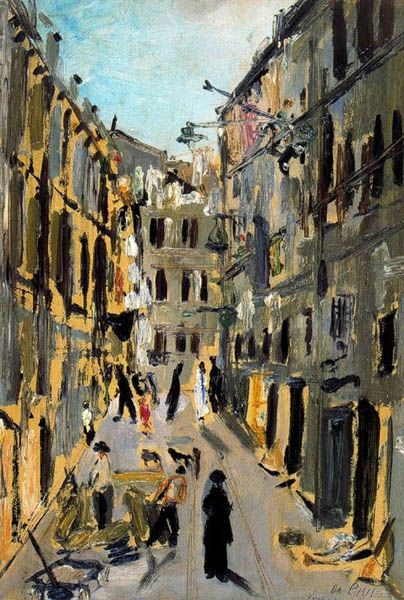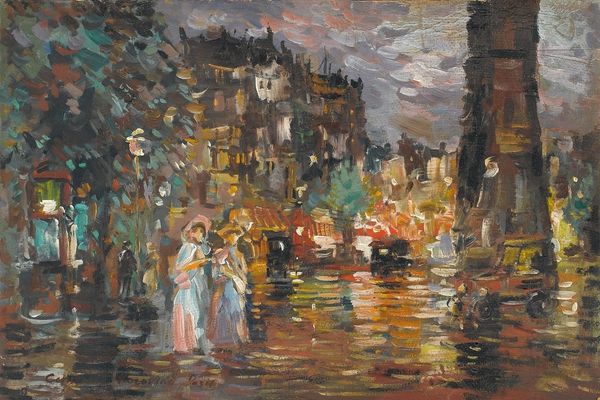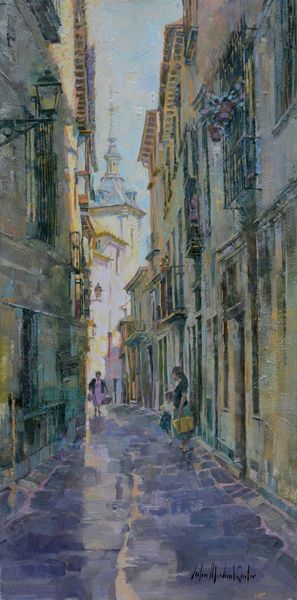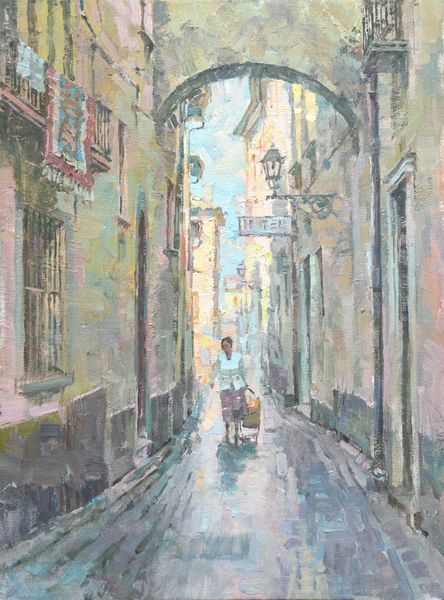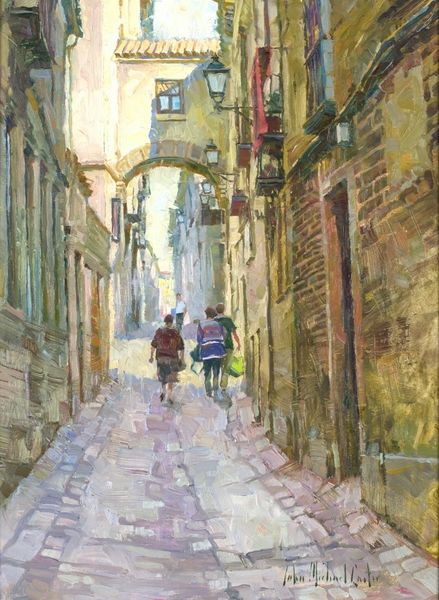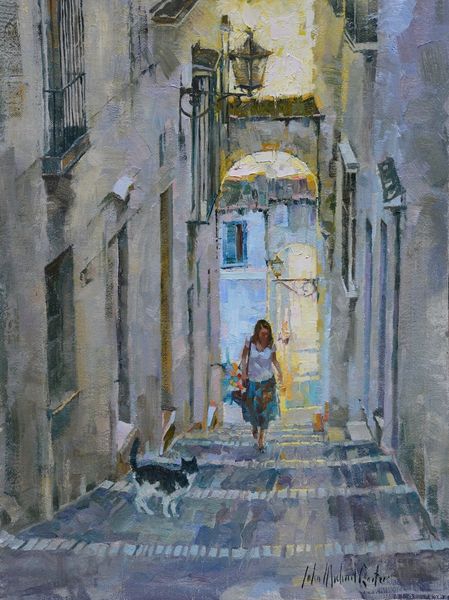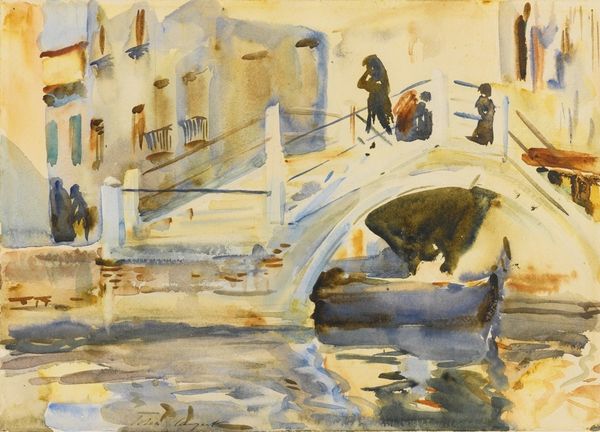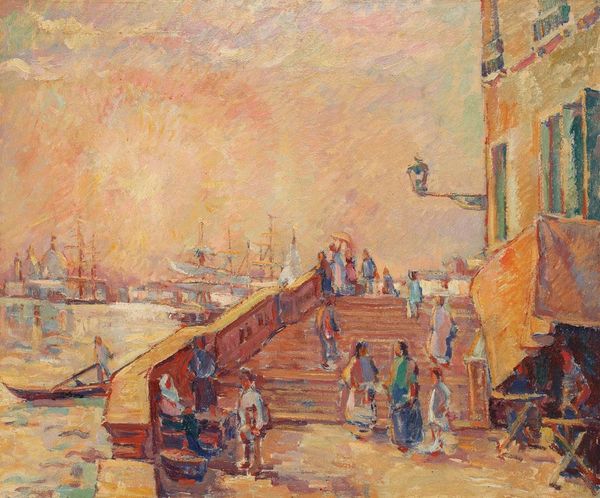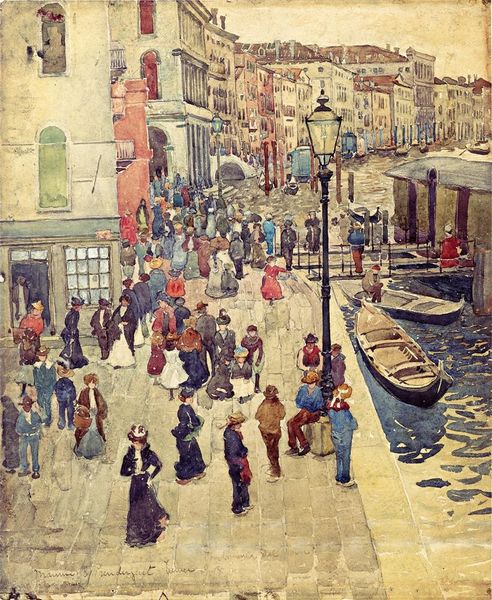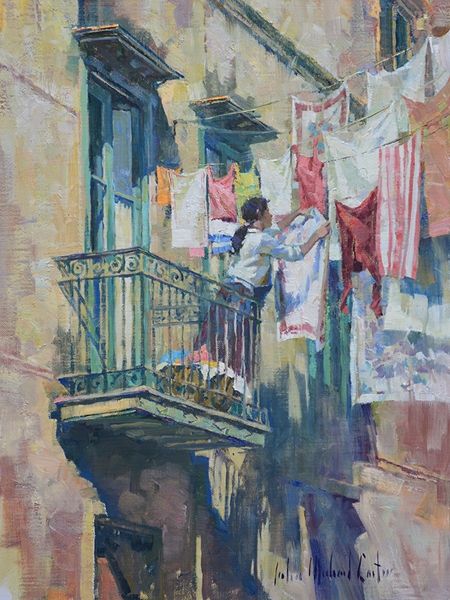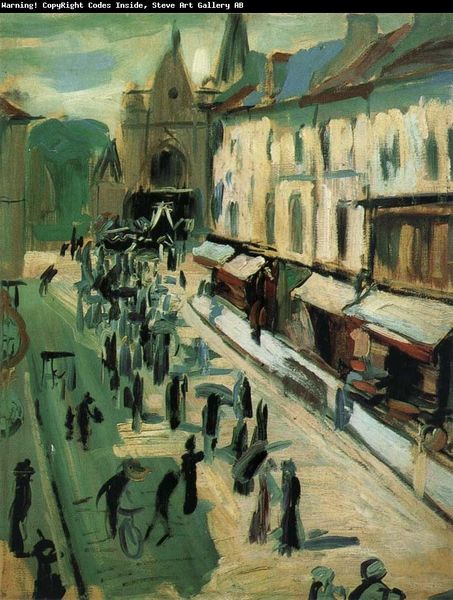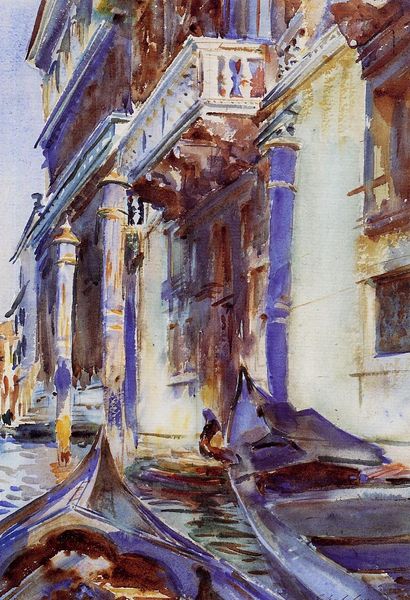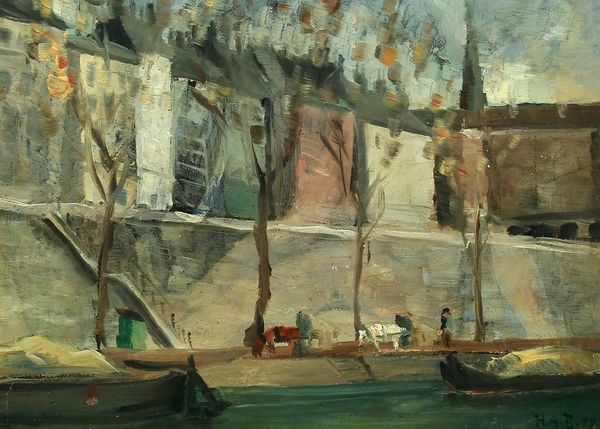
Copyright: Ligia Macovei,Fair Use
Editor: We are looking at "Flower Sellers in Venice" painted in 1958 by Ligia Macovei, using oil paints. It’s an energetic depiction of a Venetian street. What symbolic weight do you find in this vibrant composition? Curator: Venice itself is laden with symbolism. As a "floating city," it embodies fluidity, transition, and perhaps even a dreamlike state. Do you see how the flowers held by the woman almost become stand-ins for Venice itself, their temporary beauty echoing the city's fragile existence? Editor: That’s a lovely image. I hadn't considered the ephemeral nature of both. And the water reflecting the buildings… almost mirroring and distorting reality? Curator: Precisely. And think about the colors: Macovei uses warm hues, imbuing the scene with a sense of nostalgia or perhaps longing. Does that emotional palette suggest something to you about Venice's place in the cultural memory? Editor: It makes me think of the city’s romantic association. That carries so much baggage, and not all of it positive. Are the flower-sellers contributing to or complicating that symbolism, in your view? Curator: I think they add to it. They introduce the idea of trade and labor, bringing a touch of reality to this city of dreams, complicating Venice as a pure fantasy, it is also a real, working city, as symbolized through its hard working women. Don’t you agree? Editor: I do. I had only viewed them as bringing color to an already colorful setting. Curator: This is a fascinating composition because it invites us to confront the multifaceted cultural significance of a place. We should all remember these symbols and where they come from. Editor: Absolutely, understanding how those symbols connect and influence our views gives the image greater significance. Thank you!
Comments
No comments
Be the first to comment and join the conversation on the ultimate creative platform.
